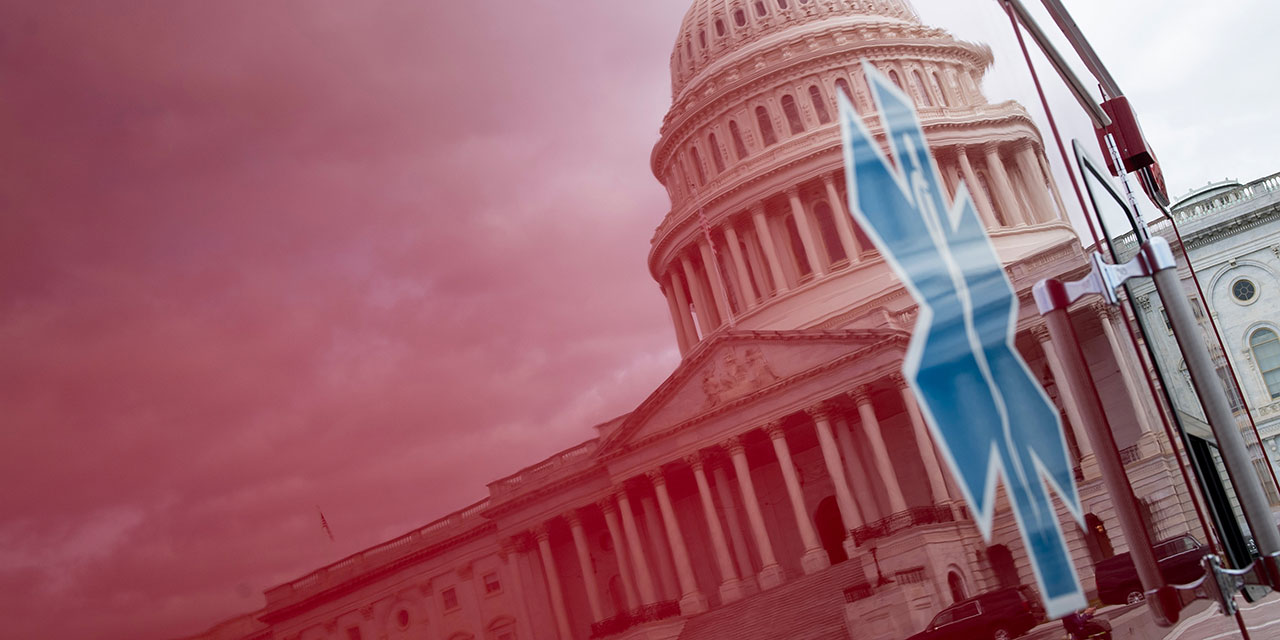On April 9, 2020, a massive wave of relief funds began flowing into the U.S. health-care sector. Overnight, the government deposited $30 billion in the accounts of more than 200,000 hospitals, physicians, clinics, home health agencies, nursing homes, and other health-care providers. It was the first appearance of the Provider Relief Fund (PRF): one of the Trump administration’s successful, but relatively unsung, responses to Covid-19.
Congress had authorized the plan barely two weeks earlier to provide an eventual $175 billion to rescue the U.S. health-care sector, and officials planned and executed it in just over a week’s time. (We both played a part in this effort.) It helped health-care providers survive the severe downturn in finances caused by lockdowns—specifically, state and local bans on non-emergency care. Though well-intentioned, these bans cut off providers’ income suddenly, leading to the unexpected furloughing of nurses and doctors, and the potential shutdown of the U.S. health-care sector, amid a medical crisis. Recognizing the situation, Congress allocated funds for the Department of Health and Human Services.
Finally, a reason to check your email.
Sign up for our free newsletter today.
No one had ever attempted such a thing before. The Provider Relief Fund team, drawn from staff at HHS and the White House, settled quickly on general guidelines, looking to make distributions fair, fast, and transparent. To understand the scale of the effort: $175 billion is larger than the combined annual revenue of Tesla, Goldman Sachs, Boeing, and Coca-Cola. The fastest and simplest way forward for the first distribution was to use the Medicare fee-for-service billing information already in hand at HHS and then use a bank to transfer an estimated amount equal to two weeks’ lost revenue from the first wave of Covid-19 shutdowns.
Using Medicare information for this first distribution had its drawbacks. Medicare principally serves the over–65 population and the disabled, so specialties such as pediatrics and OB-GYN would receive relatively less in the initial $30 billion tranche. Thus, officials allocated another $20 billion for providers who could declare their lost revenues and be paid later. Still, every major hospital got immediate relief from the first distribution. Even the major national children’s hospitals received some help, thanks to their care for the disabled population.
After the first $30 billion tranche and subsequent $14 billion to urban “hot spots” and $10 billion to rural and vulnerable populations came an unsolicited response to the PRF helpline from providers. They expressed real gratitude that disbursed funds allowing doctors and other providers to maintain their business during those first terrible weeks of the lockdowns. Many providers, after realizing they were not financially threatened, returned money because they felt it was right to do so. It’s rare to see corporations return free money nowadays, but many felt that doing it was in the country’s best interests.
Undertaken before Operation Warp Speed, the PRF was the first successful public-private partnership of the pandemic. The administration chose United Health Group as its partner. Drawing on its private-sector experience, United Health Group managed interactions between the PRF and providers, setting up a call center to answer questions from health-care providers. And United Health’s Optum Bank could make the payments for the program—because as a bank, it could immediately draw up sufficient funds to make wire transfers to providers. Internally, HHS’s Health Resources and Services Administration carried out much of the work, using its experience as one of the government’s largest grant-making agencies. (One should note that United Health Group, like many companies, offered to help for free; the government paid a relatively small fee for the effort, which continues to this day.)
When we left the Trump administration, United Health Group had paid providers just over $100 billion from the Provider Relief Fund—a huge achievement. The mark of a successful program is exemplified by the old Washington witticism, “Good news is no news.” The PRF received high marks from the HHS inspector general and from the Government Accountability Office, whose investigations praised HHS for transparency and made no recommendations for improvement. Meantime, health-care bankruptcies in 2020 were the lowest ever recorded, according to the widely used Polsinelli–TrBK Distressed Indices Report. Plummeting volume in health-care services in 2020 was offset by this timely relief.
What lessons should we take away from this program? Part of the success of the PRF stemmed from the initial recognition that funds would not reach everyone in the initial distribution. The fund retained most of the money for distributions. That gave officials the flexibility to track the development of the disease and to assist groups of providers in a more equitable manner as information became available.
Another lesson is that public-private partnerships work when each party plays to its strengths and none tries to reinvent the wheel. Leadership should set forth simple principles to help evaluate proposals that program administrators, fund recipients, and the public can understand. And leaders should acknowledge data gaps but not be paralyzed by them, making decisions and adjusting as new data emerge.
The Provider Relief Fund was the right policy at the right time. We are grateful to have played a part in it. This behind-the-scenes program moved quickly to tide over U.S. healthcare providers with grants when they needed it most. Main Street wasn’t the only place whose businesses took a financial wallop during Covid. The PRF offered hope and help for physician groups, hospitals, and private practices during an unprecedented health crisis. Like Operation Warp Speed, it’s the sort of program from which we can all learn.
Photo by BRENDAN SMIALOWSKI/AFP via Getty Images
